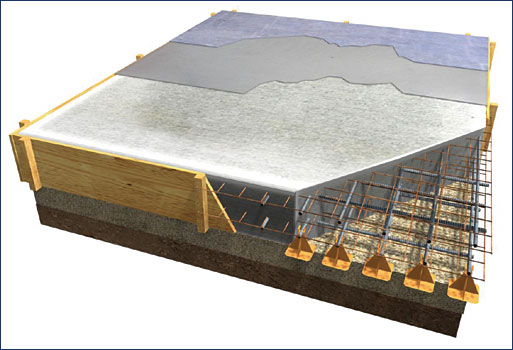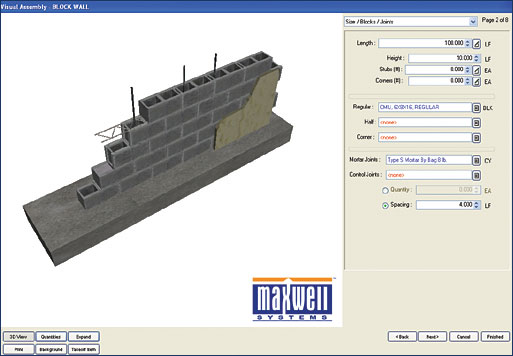March 2009
Software & Technology
Understanding Estimating Software
In a struggling economy and tightly competitive industry like construction, the ability to create accurate, user-friendly project cost estimates for a potential client is paramount. To that end, a number of software companies are offering estimating software, each proposing some unique hook or added benefit.
Staying ahead in the ever-changing construction technology arena is a challenge that can prove pricey if you don’t choose the software that is right for your company and your staff. A little research can point you in the right direction and save your company a lot of money, time and frustration in the end. Following is a look a several types of estimating software products currently on the market.
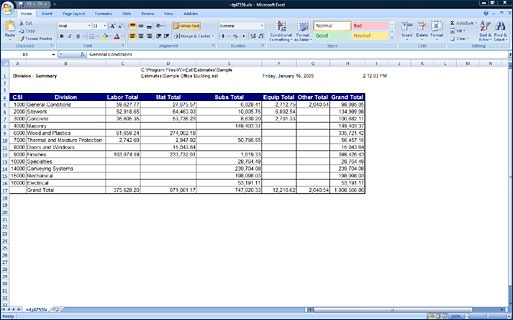
WinEst
Developed in 1992, Kent, Wash.-based WinEst has proven to be the single biggest success for WinEstimator Inc., says Steve Watt, president/CEO.
“The majority of people purchasing WinEst are either coming from a manual method of developing estimates or using Excel,” he says, noting the program’s heavy focus on ease-of-use. “It was developed with the idea of making sure the estimator had ease-of-use and the comfort of using Excel; it’s very spreadsheet driven.”
But customers who choose WinEst over Excel do so mainly because of the underlying database, which allows them to save data from figures on material, production rates, prices, and units of measure, which they can use to populate new project estimates.
“Otherwise you’re creating estimates from scratch every time,” says Watt. “It’s amazing, after all these years, that the migratory path to our program and the people using it are coming from an Excel background.”
Another benefit is the standardization WinEst allows, especially for larger companies with multiple estimators outputting data and reports on the same project. Watt says that being able to produce uniform reports and estimates across the company is definitely an asset.
Development is also focused on integration to other tools customers use, such as Microsoft Project. WinEst is a Microsoft Windows-based program, allowing users to take information in the estimate and use it for cost and resource data for the individual tasks in Microsoft Project. This provides a seamless exchange of cost data information flow. The software also integrates with many other scheduling, accounting and CAD solutions, including those of Microsoft Visio, Microsoft Business Solutions and Primavera, as well as numerous takeoff programs and about 20 of the leading job cost accounting systems on the market.
As an industry-wide push is happening for more implementation of building information modeling (BIM), estimating software companies are offering more solutions specifically for that process. Watt says WinEst supports the idea of BIM by deriving costs from a 3D building model.
“[It’s especially important] for some larger design-build firms that are more focused on BIM technology,” says Watt. “The subcontractor market needs to be patient; tools are coming out soon to allow them to benefit from BIM, too.”
The program allows users to slice and dice estimates by a number of variables, which is extremely useful when presenting all sides of a cost estimate to a potential client. In addition, with an established database, an estimator can find three to five estimates of projects similar in scope to show the owner/client.
“That ability helps defend your numbers, when an owner looks at four or five other projects and sees a contractor has a history with all those other similar projects,” says Watt of his project’s benefit as a marketing tool. “No owner wants to think the contractor is cutting their teeth on their project.”
WinEst software is available in a number of different levels, depending on the size and need of the purchasing company, and ranging in price from $3,000 to $10,000. In addition, training is offered through a variety of options, including classes at company headquarters, online training with WinEst University, or on site at the customer’s location.
Quest Estimator
Maxwell Systems, based in King of Prussia, Pa., has had an estimating product on the market for more than 20 years. Currently, their Quest Estimator product offers an all-in-one, fully automated system, from takeoff to bid, and proposal to accounting.
Quest performs takeoff and generates quantities through a digitizer board or imported digital files in various formats, allowing users to perform takeoffs right off the screen using a mouse, says Mike Gillum, director of development – estimating.
“Digital takeoff has come a long way and is becoming more of the norm,” he says. “While some architects are fearful of letting digital files go to contractors, it’s becoming increasingly popular.”
Quest is already populated with a built-in database – a catalog of historical data – including up-to-date figures on materials, equipment, and crews and labor rates. Quest comes with a masonry database, as well as databases for other subcontractor areas, such as electrical and plumbing.
“You don’t have to create that database by hand or with Excel,” says Gillum. “Each contractor changes pricing to reflect their particular region. You can also bring in existing Excel spreadsheets.”
Particularly useful to the masonry contractor is one of the most unique aspects of Quest Estimator: the visual assemblies feature. This feature allows the estimator to provide a 3D graphic image for the contractor, whether for block, brick, glass block, composite wall, masonry paver or other materials.
“Not only do you get [estimates on] all the labor, material and equipment that make up a wall, but you also get a 3D image and a breakdown of what makes up the wall, such as brick, grout, etc.,” Gillum explains. “Nobody in the industry has that. It enables the contractor to see a picture of exactly what they’ve built. It’s especially useful for junior estimators who have to show results to leadership, and for use as a sales tool when marketing to a potential client. ”
Once an estimate is created, Quest offers multiple ways of sorting and filtering the information, including the ability to update pricing, make changes to overhead and change bid day data.
Maxwell has integrated the interoperability of BIM into the Quest Estimator, allowing small- to mid-size contractors to import, view, modify and export BIM models from large contractors, remaining competitive in an industry that is constantly moving toward the expectation of BIM capabilities among contractors of all sizes.
Priced from $5,000 to $10,000, Quest estimator also integrates with a number of other project-management, scheduling and accounting packages, including Microsoft programs, Primavera and Meridian. Training on the software is available at an addition cost and can be done on site at the customer’s location, online or at regional training events offered by Maxwell in several states.
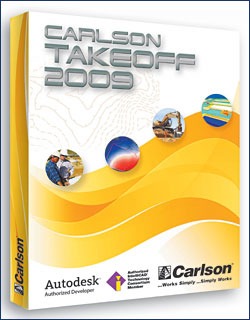 Takeoff 3D ??? Carlson Software Inc. |
Carlson Takeoff
Another company with strong market share, Maysville, Ky.-based Carlson Takeoff entered this market in 2005. While the takeoff program is relatively new, Carlson Software Inc. has marketed construction software programs for more than 25 years, says Bruce Carlson, president.
“In this digital age, the takeoff is moving from paper plans to capturing the information from digital drawing files, which contain a picture of the final design, often in 2D,” says Carlson. “If the engineers do not make the entities of the final design fully 3D, the unique tools in Takeoff can be used to lift the entities from 2D to 3D.”
Using a CAD engine based on Intellicad, the product is an integrated estimating package, almost like a hub going out to all software programs, Carlson says, with reporting going directly to Excel. An Excel presentation of quantities then can be created, formatted by the user, and output to a text file or Excel file.??Takeoff reads both DWG and DGN formats, and writes to DWG.
Of utmost importance is the program’s ability to calculate cut/fill material volumes, as well as the output of digital terrain modeling files used by the GPS devices directing heavy equipment on a construction site. The 3D viewing allows users to simulate driving across the terrain in 3D, distinguishing by color roads, building pads, ponds and other aspects of the site.
“It makes for a very effective presentation and confirmation,” he says. “The 3D viewing allows you to double check that the terrain is correctly modeled. It’s not just a pretty picture for a presentation, but an assessment tool for confirming quantities.”
Having the ability to see the finished project in 3D prior to the start date helps avoid sometimes unforeseen errors in surface projections involving elevations and slope.
Carlson realizes the increased demand for BIM integration with estimating software. The program has been developed to read the symbols created to designate such aspects as fire hydrants, manholes, water valves, electrical poles, etc. The user can then develop a spreadsheet of the different names and numbers of the symbols, which then can be sorted and a cost per category determined, such as roads, electrical, utility and so forth.
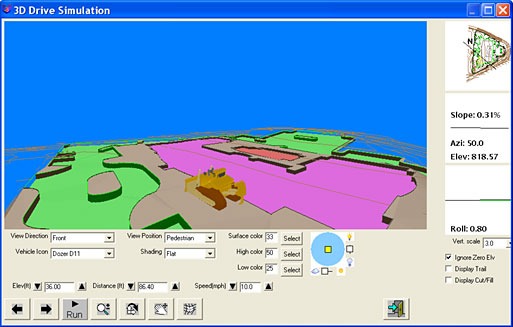
“You have to bid projects to win them, and you have to bid as tightly and closely to the margin as possible to win over your competitors,” says Carlson. “Precise bidding and estimating is crucial. One bad bid can risk bankrupting a mid-size company.”
Carlson Takeoff is priced at $9,000, with a 20 percent discount given for additional copies. A three-day training program is offered through Carlson College, as is on-site training at the customer’s location. Regional training events are held in Kentucky and Virginia.
|
|
